20060725 Y Not Laf

Last evening these two large male bears occupied positions side by side at Brooks Falls, attempting to catch leaping fish. These bears must be careful about lunging too far one side or the other for a fish, as in doing so they may slip and tumble the five feet over the falls. Not a particularly dangerous fall, but in the macho world of big boars it would not look good. I can just hear any bear making that mistake announcing to the other bears, “I meant to do that…really!”
 The bear on the left caught fish after fish for an hour and one half. This bear seemed to have the perfect spot. The fish jumped almost into his mouth.
The bear on the left caught fish after fish for an hour and one half. This bear seemed to have the perfect spot. The fish jumped almost into his mouth.The bear on the right, though only two or three feet away, had no luck.
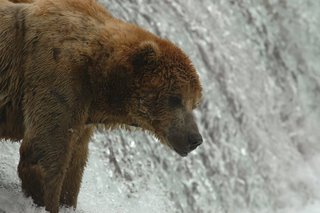 Though fish jumped all around him, none jumped close enough for him to grab.
Though fish jumped all around him, none jumped close enough for him to grab.Each time the bear on the left would catch a fish, he would move off several feet to the left for five minutes or so to eat it. This left his fishing spot open. Oddly, the bear on the right remained loyal to his own spot. Even though the much better spot three feet away was vacant with fish jumping, the hungry bear would not take it.
I got to thinking about this bear. “What a dummy you are! Just move a couple of feet and you’ll be in the primo spot! That other bear is busy eating a fish, too busy to pay any attention to you. Now’s your chance, knucklehead, go for it!! What is wrong with you?” Then I got to thinking about me.
At the moment Brooks Camp residents are requested to minimize wastewater. Our wastewater holding tanks are full and the leach field is failing due to rainy conditions and many many visitors. We are asked not to wash clothing, not to take showers, to allow dishes to pile up before washing them, and, oh yes, “if it’s yellow, let it mellow.”
Twice in the last hour I have needed to relieve myself of bodily waste, the kind that men can usually eliminate while remaining standing. I have walked into the bathroom thinking, “Remember, do not flush.” Twenty seconds later I mindlessly operate the lever.
What’s wrong with me? What is wrong with that bear? I suppose we are both creatures of habit.
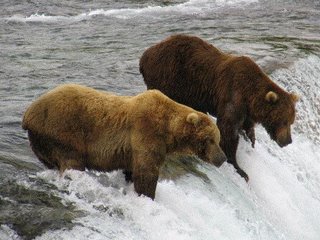
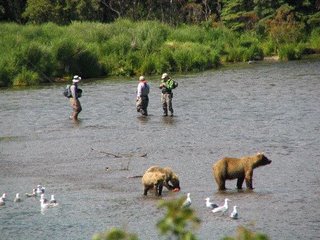




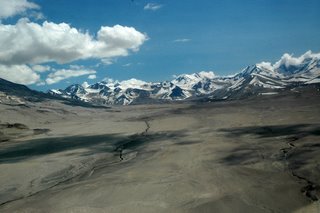












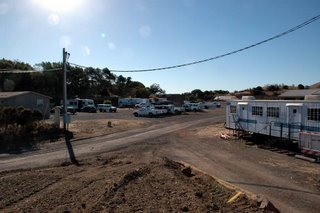

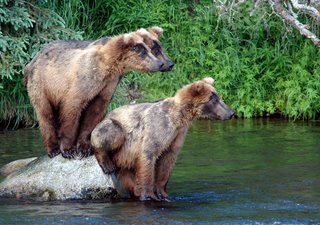








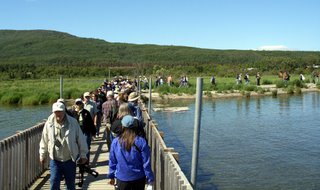
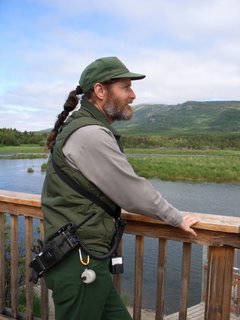
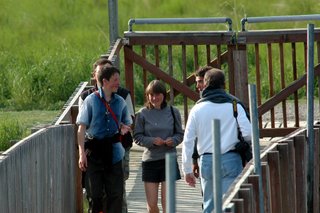
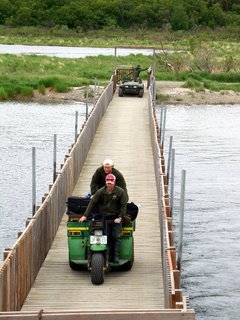
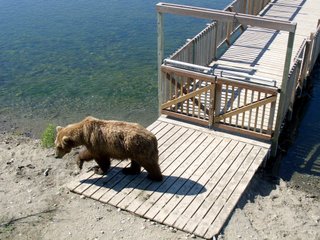
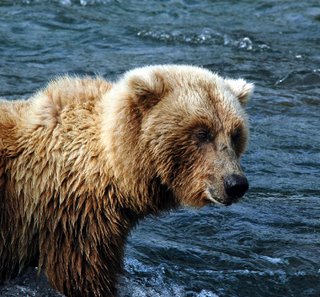

.jpg)
